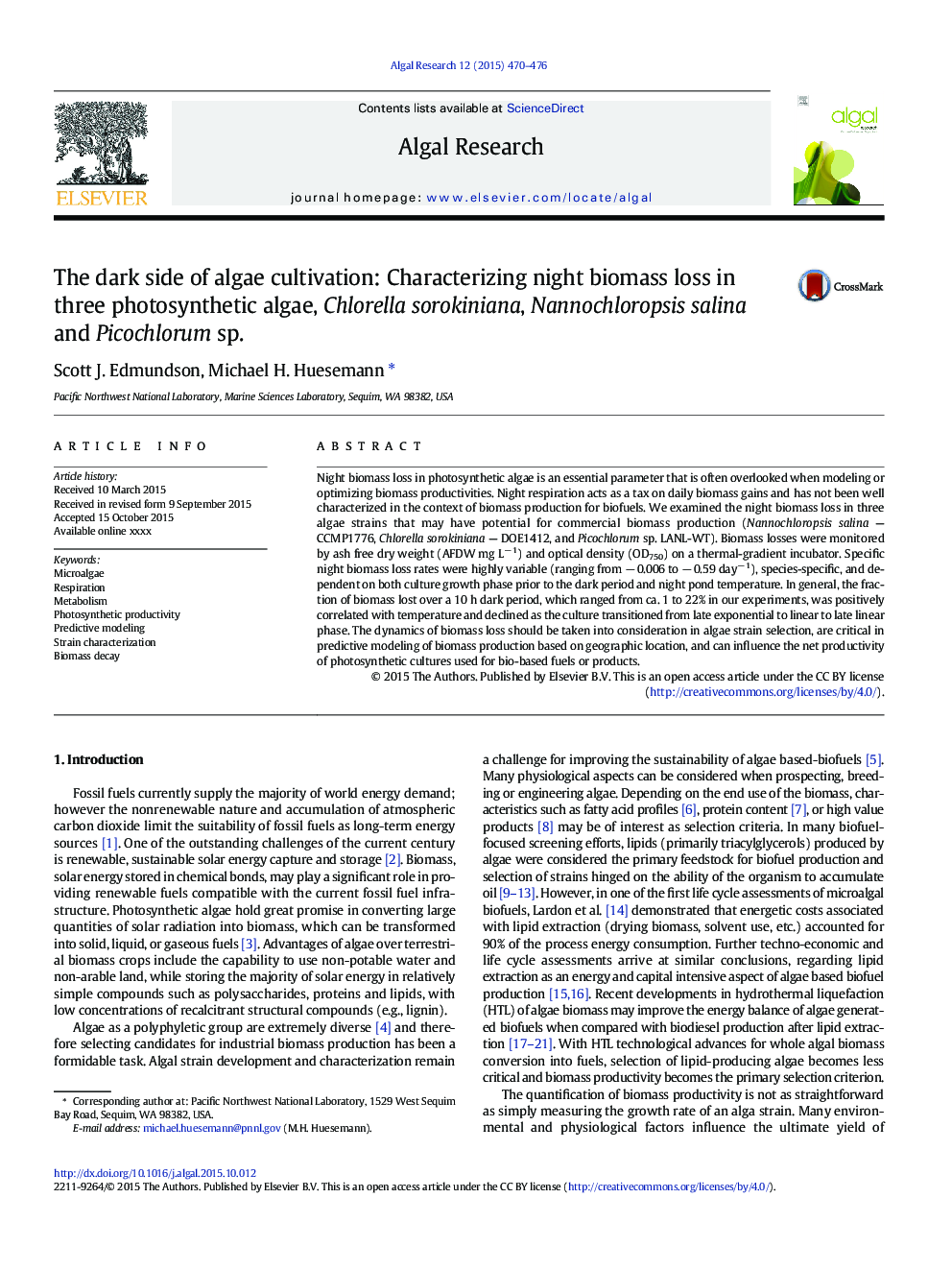| Article ID | Journal | Published Year | Pages | File Type |
|---|---|---|---|---|
| 8087773 | Algal Research | 2015 | 7 Pages |
Abstract
Night biomass loss in photosynthetic algae is an essential parameter that is often overlooked when modeling or optimizing biomass productivities. Night respiration acts as a tax on daily biomass gains and has not been well characterized in the context of biomass production for biofuels. We examined the night biomass loss in three algae strains that may have potential for commercial biomass production (Nannochloropsis salina - CCMP1776, Chlorella sorokiniana - DOE1412, and Picochlorum sp. LANL-WT). Biomass losses were monitored by ash free dry weight (AFDW mg Lâ 1) and optical density (OD750) on a thermal-gradient incubator. Specific night biomass loss rates were highly variable (ranging from â 0.006 to â 0.59 dayâ 1), species-specific, and dependent on both culture growth phase prior to the dark period and night pond temperature. In general, the fraction of biomass lost over a 10 h dark period, which ranged from ca. 1 to 22% in our experiments, was positively correlated with temperature and declined as the culture transitioned from late exponential to linear to late linear phase. The dynamics of biomass loss should be taken into consideration in algae strain selection, are critical in predictive modeling of biomass production based on geographic location, and can influence the net productivity of photosynthetic cultures used for bio-based fuels or products.
Related Topics
Physical Sciences and Engineering
Energy
Renewable Energy, Sustainability and the Environment
Authors
Scott J. Edmundson, Michael H. Huesemann,
